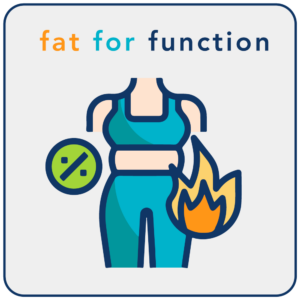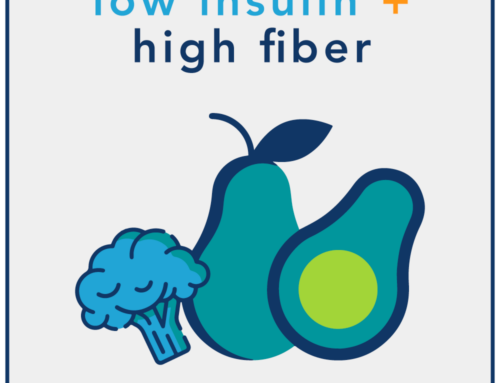In Defense Of Fat
For all of human existence, we ate an omnivorous diet that was as nutrient dense as possible of fresh whole foods that were local to us and in season. That was it. It served us well. Somehow without all the fancy complicated studies we instinctively knew what foods were healthy and what foods weren’t. Today, it is like we have to prove with a double-blind, placebo controlled, peer reviewed study that this sort of nutritional approach is actually the answer rather than the ultra processed, artificially contrived, low- fat whole-grain diet that came to be recommended in the 1980s. How’s that working out for us?

Not very well it seems. The fact of the matter is that when you remove a major component of the human diet that has been there since, well, we’ve been human (natural whole food fats) and replace it with another component in a ratio we have never experienced before (sugar and grains), things go awry.
In 1980 the USDA made a dramatic shift in the Dietary Guidelines for Americans, there is a pretty suspicious backstory as to why in many books on the market today including our own Dr Robert Lustig’s Fat Chance. The reasons are numerous and will take too long to explain here. The purpose of this article is to explain why fats ARE an important part of your diet, and discuss which ones are actually the healthy ones and which ones to limit or avoid.
The human body needs fat in the diet for several reasons. Our bodies use fat for energy, to absorb fat soluble vitamins, insulate organs and keep us warm, support cell membrane integrity, brain function, immune system function, regulate hormone levels and more. We need fat. Period. With that said, not all fats are created equal.
There are 3 main types of fats for the purpose of this article. Saturated, Unsaturated and Trans Fats.

Saturated fats are easy to identify since they are solid at room temperature and hard when refrigerated. These are found in your steak, butter, coconut oil, tallow, lard etc. They makeup ½ of your cell membrane structure and provide valuable fat soluble vitamins. These are the best fats to cook with since they are extremely stable at higher cooking heats and don’t turn toward rancidity. A small percentage of individuals are sensitive to saturated fat, as saturated will raise certain inflammatory lipids in their blood. This is usually due to genetics, so it’s important to have regular blood work and work with your Simplex Health care team to make sure you personally handle them well.
Unsaturated fats have two main types-monounsaturated and polyunsaturated. Mono-unsaturated are found in many oils and foods like olives and olive oil., Avocados and avocado oil. They tend to be liquid at room temperature but get cloudy and thicker when refrigerated. These are relatively safe to cook with but at lower temperatures, and make a good salad dressing.
Poly-unsaturated fats are a bit of a mixed bag. These fats are liquid at room temp or when refrigerated. As a matter of fact, they are often better off kept cold to keep from going rancid. These are broken into a few types, the most commonly discussed being Omega 3s and Omega 6s. Omega 3s are commonly found in fish, algae, flax and nuts. Omega 3s are anti-inflammatory, aid in circulation and support brain function. Omega 6s commonly found in grains, seeds and nuts tend to be pro-inflammatory, which we need from time to time to respond to an injury but too much can cause chronic inflammation. The name of the game here is balance. The typical grain heavy, processed food standard American diet has an enormously out of balance ratio. Ideally we need a 1:1 ratio of Omega 3 to Omega 6 fats. The typical standard American diet ranges from 1:10-30! Yes 10-30 parts Omega 6 depending on how much processed food is consumed. Is it any wonder why chronic inflammation is rampant!
Trans Fats are essentially chemically modified fats that came to market in order to make food more shelf stable. The problem is that they wreak havoc on those who eat them. Think hydrogenated vegetable oils like Crisco. These fats are common in many of our favorite shelf stable snack foods. Trans fats are absorbed through the cell membrane and cause damage resulting in chronic inflammation, heart disease, obesity, diabetes and immune system dysfunction.
To keep this simple, here are some good rules of thumb.
-
- Whole food fats are best. Fats naturally occurring in whole foods are meant to be there. The fat in your steak, salmon, eggs, cheese, yogurt, olives, nuts, avocado, etc. These provide a range of saturated, mono unsaturated, Omega 3s and 6s in the proportions nature intended.
- Saturated fats and monounsaturated fats are best for cooking because they are the most stable when heated.
- Olive and avocado oil are best for dressing a salad.
-
- Omega 3s are best consumed in whole food form but can also be supplemented with capsules to lower inflammation. We recommend keeping these in a cool dark place to avoid rancidity.
- Most of us need to reduce our Omega 6 fats.
- Avoid trans fats all together.
We hope this little break down is helpful. Just remember, a calorie is not a calorie. A fat is not a fat. The type of fats we have been told are “good fats” vs “bad fats” aren’t true in the way we been told. The bullet points above are a helpful place to start.



